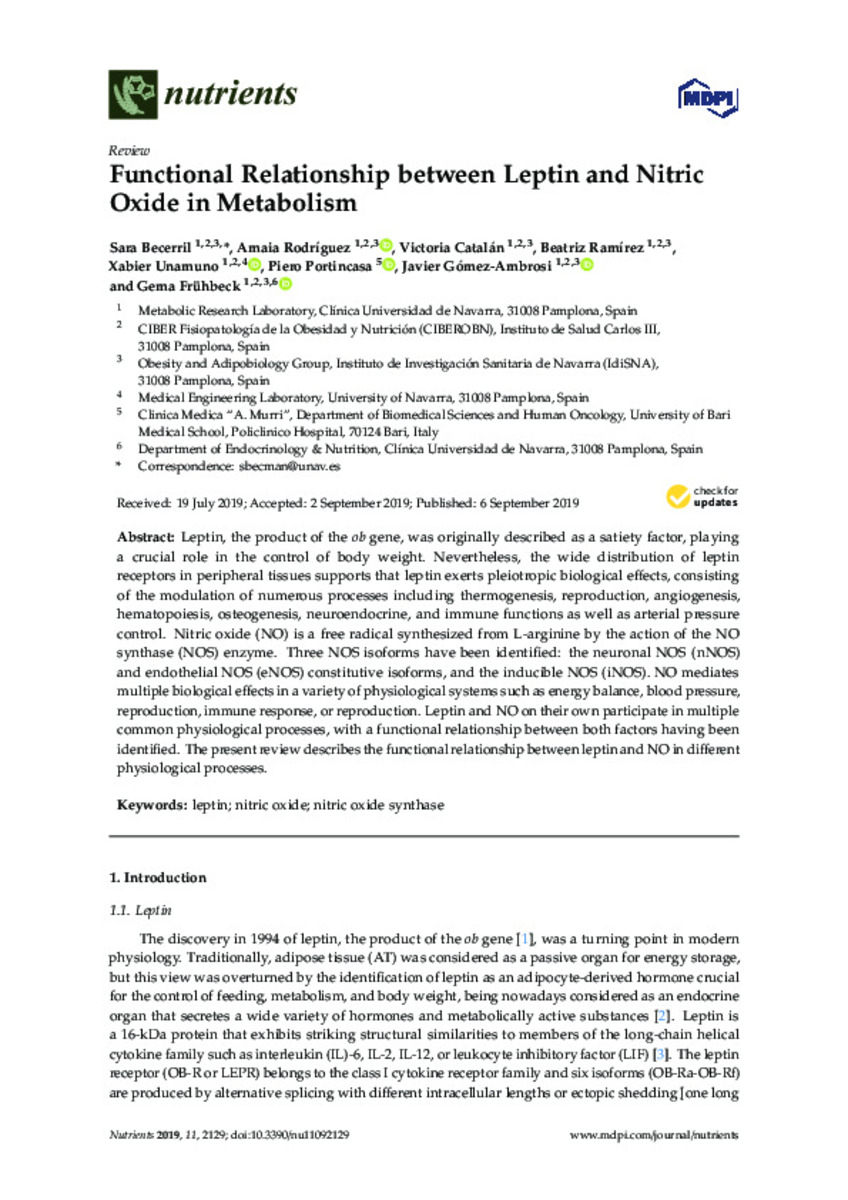Functional relationship between leptin and nitric oxide in metabolism
Palabras clave :
Leptin
Nitric oxide
Nitric oxide synthase
Fecha de publicación :
2019
Nota:
This article is an open access
article distributed under the terms and conditions of the Creative Commons Attribution
(CC BY) license (http://creativecommons.org/licenses/by/4.0/).
Cita:
Becerril, S. (Sara); Rodriguez, A. (Amaia); Catalan, V. (Victoria); et al. "Functional relationship between leptin and nitric oxide in metabolism". Nutrients. 11 (9), 2019, 2129
Aparece en las colecciones:
Estadísticas e impacto
0 citas en

0 citas en

Los ítems de Dadun están protegidos por copyright, con todos los derechos reservados, a menos que se indique lo contrario.







